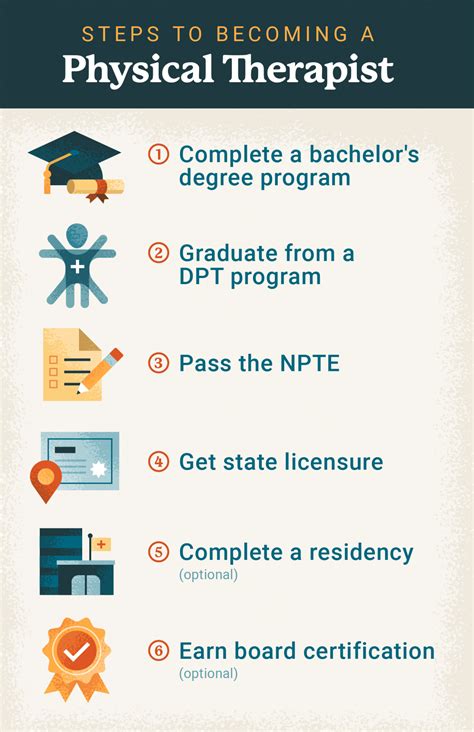Intro
Discover the multifaceted role of a physical therapist as we delve into the job duties and responsibilities that drive patient recovery and wellness. From assessment and treatment planning to modalities and exercises, explore the key tasks and skills required to succeed in this rewarding healthcare profession.
As the world grapples with an aging population and an increased focus on healthcare, the demand for skilled physical therapists has never been higher. Physical therapists play a vital role in helping patients recover from injuries, manage chronic conditions, and improve their overall quality of life. But what exactly do physical therapists do, and what are their job duties and responsibilities? In this article, we'll delve into the world of physical therapy and explore the ins and outs of this rewarding career.
The Importance of Physical Therapy
Physical therapy is a crucial aspect of healthcare that focuses on helping patients develop, maintain, and restore maximum movement and functional ability. Physical therapists work with patients of all ages, from newborns to older adults, to address a wide range of health conditions, including injuries, illnesses, and disabilities. By providing personalized care and treatment, physical therapists empower patients to take control of their health and well-being, enabling them to lead active and fulfilling lives.

Physical Therapist Job Duties and Responsibilities
Physical therapists are highly trained healthcare professionals who possess a deep understanding of the human body and its many complexities. Their job duties and responsibilities are diverse and multifaceted, encompassing a range of activities, including:
- Patient Assessment: Physical therapists evaluate patients to identify their strengths, weaknesses, and areas of need. This involves conducting thorough assessments, reviewing medical histories, and developing personalized treatment plans.
- Treatment Planning: Based on their assessments, physical therapists create customized treatment plans that address patients' specific needs and goals. These plans may include exercises, stretches, manual therapy, and other interventions.
- Therapy Sessions: Physical therapists work one-on-one with patients, leading therapy sessions that focus on improving mobility, strength, flexibility, and balance. They may use a variety of techniques, including massage, heat and cold therapy, and electrical stimulation.
- Patient Education: Physical therapists educate patients on proper exercise techniques, posture, and body mechanics, empowering them to take an active role in their recovery and overall health.
- Progress Monitoring: Physical therapists regularly assess patients' progress, adjusting treatment plans as needed to ensure optimal outcomes.
Types of Physical Therapists
Physical therapists specialize in various areas, including:
Orthopedic Physical Therapy
Orthopedic physical therapists focus on treating musculoskeletal conditions, such as joint pain, arthritis, and sports injuries. They use techniques like manual therapy, exercise, and modalities to promote healing and improve function.
Neurological Physical Therapy
Neurological physical therapists work with patients who have neurological conditions, such as stroke, spinal cord injuries, and Parkinson's disease. They use techniques like balance training, gait training, and cognitive therapy to improve patients' mobility and independence.
Pediatric Physical Therapy
Pediatric physical therapists specialize in treating children with developmental delays, congenital conditions, and injuries. They use play-based interventions and family-centered approaches to promote healthy development and function.
The Benefits of Being a Physical Therapist
Physical therapy is a rewarding career that offers numerous benefits, including:
- Job Satisfaction: Physical therapists make a tangible difference in patients' lives, helping them recover from injuries and improve their overall health.
- Variety: Physical therapists work with diverse patient populations, addressing a range of conditions and challenges.
- Opportunities for Advancement: Physical therapists can specialize in various areas, pursue leadership roles, or transition into academia or research.
- Competitive Salaries: Physical therapists are well-compensated, with median salaries ranging from $85,000 to over $120,000 depending on experience and location.

How to Become a Physical Therapist
To become a physical therapist, you'll need to:
- Earn a Doctoral Degree: Pursue a Doctor of Physical Therapy (DPT) degree from an accredited program.
- Complete Clinical Experience: Participate in clinical internships and residencies to gain hands-on experience.
- Pass the Licensing Exam: Pass the National Physical Therapy Examination (NPTE) to become licensed.
- Maintain Certification: Complete continuing education requirements to maintain certification and stay current with industry developments.

Conclusion
Physical therapists play a vital role in the healthcare system, helping patients recover from injuries, manage chronic conditions, and improve their overall quality of life. With their diverse job duties and responsibilities, physical therapists are in high demand, and their career offers numerous benefits, including job satisfaction, variety, and opportunities for advancement. If you're passionate about helping others and making a difference in the world, consider pursuing a career in physical therapy.
We hope this article has provided you with a comprehensive understanding of physical therapist job duties and responsibilities. If you have any questions or would like to share your experiences, please comment below!
What is the average salary for a physical therapist?
+The average salary for a physical therapist varies depending on experience, location, and setting. According to the Bureau of Labor Statistics, the median annual salary for physical therapists is around $89,000.
Do physical therapists need to be certified?
+Yes, physical therapists need to be certified. In the United States, physical therapists must pass the National Physical Therapy Examination (NPTE) to become licensed.
What are the different types of physical therapy specializations?
+Physical therapists can specialize in various areas, including orthopedic physical therapy, neurological physical therapy, pediatric physical therapy, and sports physical therapy, among others.
